Carpal Tunnel Syndrome
Whether you spend long hours typing on a keyboard, engaging in manual labor, or using handheld devices extensively, the risk of developing CTS is a reality that cannot be ignored. However, there is hope for relief through targeted exercises designed to alleviate symptoms and strengthen the affected areas.
In this article, we will explore a series of exercises specifically tailored to combat the challenges posed by Carpal Tunnel Syndrome. By incorporating these exercises into your routine, you can not only find relief from discomfort but also take proactive steps toward preventing the progression of CTS. Let’s embark on a journey towards healthier, pain-free hands.
Table of Contents
What is Carpal Tunnel Syndrome?
In this article, we described all about the carpal tunnel condition with its signs, symptoms, and treatment. and then all the physical exercises that help to recover from the condition. These exercises may not be easy at first, but they should not be painful. If these occur, cancel or stop altogether and inform your doctor.
If you are unsure about these exercises, consult your doctor. Certain exercises can help people with mild to moderate cases improve symptoms and avoid carpal tunnel surgery. These exercises have the strongest effect when you are also given other non-surgical treatment options, such as changing the procedure that caused the syndrome or using wrist splints.
Carpal tunnel syndrome is a condition that affects one of the main nerves in the wrist area. The carpal tunnel is a space created by the natural arch of the carpal bones. A thick band called the transversus carpi muscle creates a roof for the tunnel. The size will never change of tunnel because the bones and ligaments act as solid walls.
Nine tendons of the hand which are responsible for the flexion of the fingers and thumbs and the median nerve pass through the tunnel. The function of the median nerve is that it passes the sensation (sensation) to the skin of the thumb, index and middle fingers, and half of the ring finger. The nerve also provides a line of communication to the muscles at the base of the thumb (thenar muscles).
Carpal tunnel syndrome is a common condition that is the reason for pain, numbness, tingling, and weakness in the hands and wrists. This happens when there is increased pressure on a nerve called the median nerve at the wrist. This nerve innervates the thumb, index and middle fingers, and half of the ring finger. The little finger (“pinky”) usually does not suffer.
During the mid-19th century, first carpal tunnel syndrome was described. The first surgery to free the carpal tunnel was performed in the 1930s. It is a disease that orthopedic surgeons have recognized for over 40 years. The carpal tunnel is a narrow channel or tube in the wrist. Like a tunnel you can drive a car through, this part of the wrist allows the central nerve and tendons to connect to the hand and forearm.
The parts of that tunnel are:
Carpal bones: These bones form the base and sides of the tunnel. They are formed in a semicircle.
Ligament: The upper part of the tunnel, the ligament is the strong tissue that holds the tunnel together. the median nerve is present on the side of the tunnel.
Median nerve: This nerve innervates most of the fingers (except the little finger). the median nerve provides the base of the thumb and index finger of the hand.
Tendons: String-like structures, tendons connect the muscles of the forearm to the bones of the hand. It is necessary for the thumb and finger movements.
Relevant Anatomy
The carpal tunnel is a narrow passage in the wrist about an inch wide. The floor and sides of the tunnel are made up of small carpal bones called the metacarpals.
The roof of the tunnel is a strong band of connective tissue called the transverse carapace. Because these boundaries are very rigid, the carpal tunnel has little ability to stretch or grow.
The median nerve is one major nerve of the hand that supplies the base of the thumb, index finger, middle finger, and ring finger. It originates from a group of nerve roots in the neck; then these roots join to form a single nerve in the arm.
The median nerve runs down the upper arm, over the elbow and forearm, then passes through the carpal tunnel in the wrist on its way to the hand and fingers. Along the way, it separates into several smaller nerves, especially when it reaches the palm. These nerves provide sensation in the thumb, index finger, middle finger, and ring finger (thumb side).
The median nerve supplies the muscles around the base of the thumb index, middle, and ring finger. Nine tendons that flex the fingers and thumb also pass through the carpal tunnel along with the nerve. These tendons are called flexor tendons because they bend the fingers and thumb.
Causes of carpal tunnel syndrome
The most likely cause of carpal tunnel syndrome is excessive pressure on the median nerve in the carpal tunnel. This extra pressure can cause swelling (inflammation) of the contents in the tunnel. When the pressure causes nerve symptoms, it is called compression neuropathy. Although the exact causes of carpal tunnel syndrome are usually unknown and due to the patient’s personal anatomy, there are many factors that can increase pressure or inflammation, including:
- Rheumatoid arthritis
- Gout
- Amyloidosis
- Infections
- Psoriatic arthritis
- Arthritis of the wrist
- Tumors
- Ganglion cysts
- A wrist fracture or wrist dislocation
- Repetitive movements at work or at home
- Repetitive activities in the workplace with strong or repeated holding or vibration
Carpal Tunnel Symptoms
Symptoms of carpal tunnel include:
- Burning, tingling, or numbness of the palm and thumb or index and middle fingers
- Hand weakness and difficulty holding things
- Shock-like sensations that transfer to the fingers
- Feeling of tingling sensation that extends up the arm
- Repetitive movements such as typing can cause carpal tunnel syndrome.
First, you may notice the numbness at night at your thumb, index, and middle finger. This is usually because of the way you hold your hand while you sleep. You may wake up in the morning with numbness and tingling in your arms that may extend to your shoulder.
During the day, symptoms may occur when you hold something on your wrist, such as while driving or reading a book. In the early stages, clapping can help you feel better. But after some time it may not remove the numbness.
As carpal tunnel syndrome worsens, you may have less grip strength as the muscles in your hand shrink. You will also have more pain and muscle cramps. Your central nerve is not receiving it as it should because of the irritation or pressure around it. This results in:
Slower nerve impulse
Lack of sensation in fingers
Lack of strength (power) and coordination, especially the ability to use the thumb to push
Diagnosis and Tests
How is carpal tunnel syndrome diagnosed?
First, you will discuss your symptoms, and medical history, and examine your doctor or physical therapist. Next, this test is performed by the patient, which may include:
Tinel’s sign: In this test, the doctor taps the median nerve in the wrist to see if it causes tingling in the fingers.
Phalen maneuver: Also called the wrist flexion test. The doctor tells you to squeeze the backs of the hands and fingers together so that the wrists are bent and the fingers are down. you should hold the pose for one or two minutes. If your fingers are tingling or numb, you have carpal tunnel syndrome.
Two-point discrimination test: This means you can tell if two objects touching your skin are two separate points instead of one. The doctor may use a device called a 2-point disc breaker, which is a small, flat, eight-sided tool with needles protruding from each side. They can do the test several times with each finger. They start with two points touching your skin a few centimeters apart and bring them closer together until you feel pressure from just one point. The distance at which you feel just one point helps them understand nerve function and compression, two important components of carpal tunnel syndrome.
Nerve conduction velocity test: This test provides some of the strongest evidence for carpal tunnel syndrome. It measures how fast an electrical signal can travel along a nerve or from a nerve to a muscle. Your doctor will place a small electrode on your skin near your elbow. This sends a weak electrical current down your central nerve. The longer it takes for the current to travel from the elbow to the fingers, the more damage is done to the central nerve.
Electromyogram: It works like the second part of the nerve conduction velocity test. It measures how well the muscle around the central nerve is working. The doctor places a small needle electrode into the muscles of your arm and hand, which receive impulses from the central nerve. With the help of a needle electrical impulses into the muscle. You relax and bend your arm several times. Your doctor can tell if your median nerve is damaged or compressed. The needles may hurt a little, but this should stop when the doctor removes them. You may feel jolts or spasms from the electrical current. You may have some bruising where the electrode was inserted, but this should go away within a few days.
Ultrasound, X-ray, and MRI: Your doctor may order one of these tests to rule out other causes of wrist and hand pain. An X-ray may show arthritis or a fracture. An ultrasound or MRI shows a swollen or compressed central nerve. They also tell the doctor why it’s pinching, whether it’s arthritis, carpal tunnel syndrome, or another reason. There are also included lab tests, such as blood tests, to look for diseases, such as diabetes, that can damage your nerves.
Another physical examination:
Your doctor will also ask about possible patterns of your symptoms. For example, if you have Pain and numbness in your little finger or ring finger, it is not to be considered carpal tunnel syndrome because the median nerve cannot feel the finger. Your doctor may also ask if you have had any of the following symptoms:
If you are holding a phone or a newspaper
at night
in the morning
These are all signs of carpal tunnel.
Exercise for Carpal Tunnel Syndrome
Wrist movements
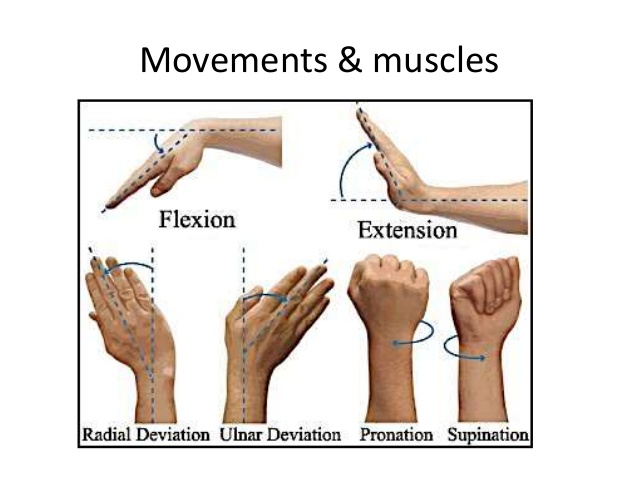
Motion of the Wrist and forearm
Performing specific wrist movements can help alleviate the symptoms of carpal tunnel syndrome. Here are some gentle wrist exercises that you can try:
Wrist Flexion and Extension:
Take your hand in front of you with your palm facing down.
Use your other hand to gently bend your wrist upward, pointing your fingers towards the ceiling.
keep the movement around five to ten seconds if you want otherwise it is not necessary.
Next, gently bend your wrist downward, pointing your fingers toward the floor.
Keep the movement around five seconds if you want otherwise it is not necessary.
Wrist Supination and Pronation:
Take your hand straight out in front of you with your palm facing down.
Rotate your wrist and hand outward so that your palm faces upward.
Hold this position for a few seconds, then rotate your wrist and hand back to the starting position.
Radial and Ulnar Deviation:
Keep your arm by your side with your palm facing down.
Gently move your wrist to the left, bringing your hand closer to your little finger.
Hold the movement for a few seconds, then return to the starting point of the movement.
Next, gently move your wrist to the right, bringing your hand closer to your thumb.
Hold the ulnar deviation for a few seconds, then return to the starting point of movement.
Perform these exercises slowly and smoothly, without forcing any movement that causes pain or discomfort. It’s essential to consult a healthcare professional before starting any exercise routine, especially if you have a pre-existing condition like carpal tunnel syndrome. They can provide guidance tailored to your specific needs and may recommend additional exercises or treatments to help manage your symptoms effectively.
Wrist Flexor Stretch
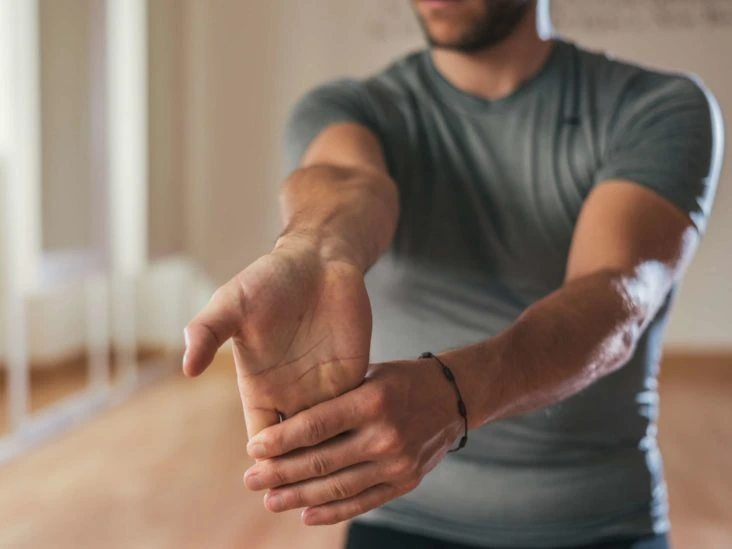
This exercise stretches the outer forearm muscles. do flexion of the wrist. Try not to lock your elbow when you reach. With the palm down, bend the wrist so that the fingers point to the floor. With the other hand, gently pull the bent arm toward the body to feel the stretch on the outside of the forearm.
Hold for 15 seconds. Release and repeat five times. Repeat the entire exercise with the other hand. People can repeat this sequence up to four times a day, five to seven days a week. A person can also use it as a warm-up stretch before doing other activities, especially any exercise that involves gripping.
Six Main Muscles that Flex the Wrist include the flexor carpus radialis, flexor carpus ulnaris, and palmaris longus. These three muscles originate on the humerus cross the forearm extend through the wrist via tendons and insert into the bones of the hand
Wrist Extensor Stretch
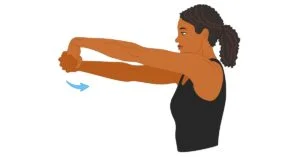
This exercise stretches the inner forearm muscles. You can do this exercise in the sitting position. Try not to lock your elbow when you reach. Bend your wrist back as if giving a “stop” signal. Using the opposite hand, gently pull the palm back toward the body to feel the inner forearm stretch. In this exercise, you can start with the passive movement and then shift to the active movement.
Hold for 15 seconds. Release and repeat five to ten times. Repeat the entire exercise with the other hand. People can repeat this sequence up to four times a day, five to seven days a week. It also works well as a warm-up before other activities, especially those that involve squatting. Wrist extensor muscles included the extensor Carpi Radialis Longus (prime mover), Extensor Carpi Radialis Brevis (prime mover), Extensor Carpi Ulnaris, and Extensor Digitorum (assists only).
Wrist rotation
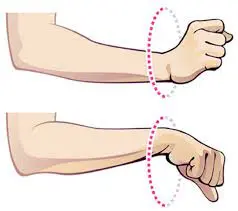
Wrist rotation exercises are beneficial for improving wrist mobility, flexibility, and strength. They can be particularly helpful in preventing stiffness and reducing the risk of injuries such as carpal tunnel syndrome. Here is a detailed guide on how to perform wrist rotation exercises effectively.
Sit or stand comfortably with your forearm resting on a flat surface, such as a table or your thigh. Your palm should be facing downwards.
(Circle Upwards) Begin making slow and controlled circular motions with your wrist, starting with small circles and gradually increasing the size of the circles.
(Circle Downwards)After completing several circles in one direction, switch and perform circles in the opposite direction. Repeat this procedure for 15-20 times in each direction.
Aim for two to three sets of wrist circles per session and do three sets per day.
Performing these wrist rotation exercises regularly can help improve wrist mobility, flexibility, and strength. It’s essential to avoid any sudden or jerky movements that may cause discomfort or pain. If you have any pre-existing wrist conditions or concerns, it is advisable to consult a healthcare professional, such as a physical therapist or an occupational therapist, before starting any new exercise routine. They can provide personalized guidance and recommendations based on your specific needs and conditions.
Finger stretch
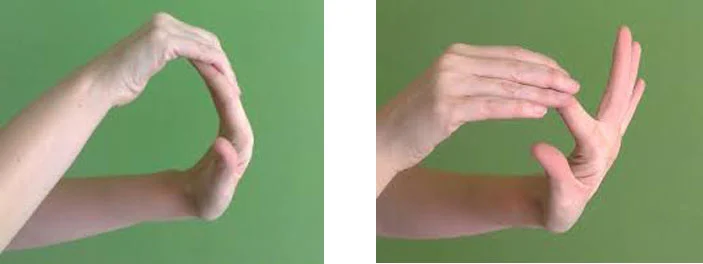
Finger Stretch Exercise The benefits of this stretch are improved flexibility and muscle endurance in each finger to help build a strong wrist joint. Housework and work: Basic daily tasks and activities can be done smoothly with a simple finger-stretching exercise. This stretch will improve the range of motion(mobility) and flexibility in your fingers. Extend your arms in front of you, palms facing you. flexion your finger and thumb to touch the base of each knuckle. Your hand should look a little like a fingernail. Hold for 30-60 seconds and release. Repeat at least seven to ten times with each arm and do three to five sets per day.
Prayer stretch

Start in a standing position.
Bring your palms together in front of your chest, fingers pointing upward, in a prayer position.
Keeping your palms together, slowly lower them toward your waist while bending your knees slightly and leaning forward at the hips.
You should feel a gentle stretch in your back, shoulders, and hamstrings. Hold the prayer pose for 20-30 seconds which is necessary while exercising.
Slowly return to the starting position.
Remember to according to your capacity give the stretch avoid excessive stretch. If you have any health concerns or pre-existing conditions, it’s advisable to consult a fitness professional or healthcare provider before trying new exercise.
Wrist stretch with weights
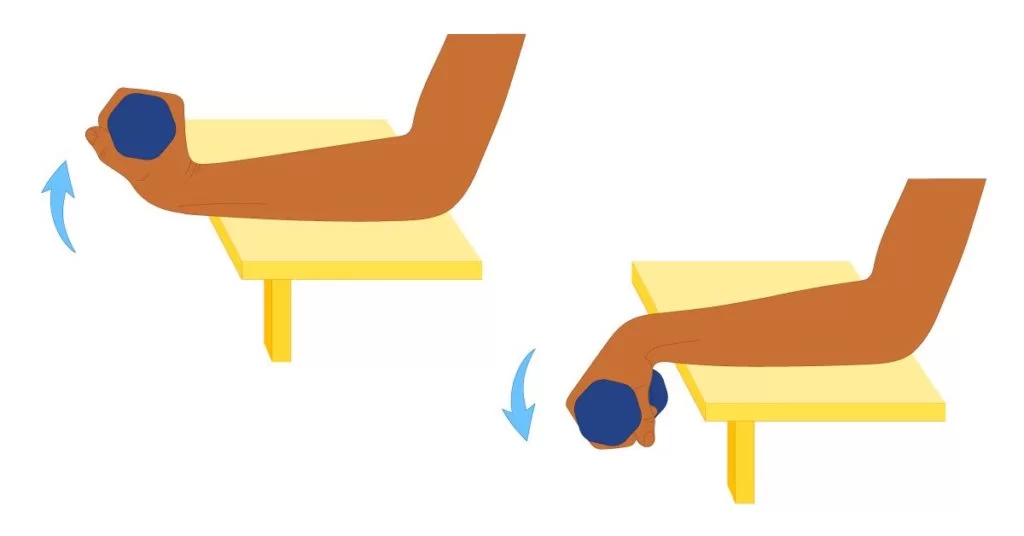
Stretching the wrists with dumbbells can be an effective way to improve wrist flexibility and strength. However, it’s crucial to perform these exercises with caution and start with light weights to prevent any strain or injury. Here is a simple wrist stretch exercise using dumbbells. It’s essential to use a weight that is comfortable and does not cause any pain or discomfort. you should consider the wrist pain during the exercise. if you feel this thing you can call your doctor or healthcare. Additionally, it’s advisable to perform a brief warm-up before starting any exercise regimen to prepare your muscles and joints for physical activity. Stretching the wrists with dumbbells can help improve flexibility, enhance wrist mobility, and strengthen the muscles, which can be beneficial for individuals experiencing wrist stiffness or weakness.
Performing this exercise regularly can help improve the strength and dexterity of the muscles in your hands. However, it’s important to consult with a healthcare professional or a physical therapist to get a comprehensive treatment plan tailored to your specific needs. They can provide you with specific exercises and guidance to manage your symptoms effectively, as well as recommend other therapies and lifestyle modifications to support your recovery.
Hold the dumbbells in your hand and the extension of your wrist straight out in front of you, palm down.
Slowly raise your arm up and back to your hand, bending at the wrist.
Slowly return to the starting position.
Repeat 10 times in three sets.
Switch to the other hand and repeat.
Thumb stretch
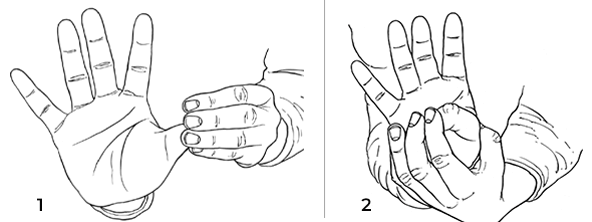
These simple at-home thumb and wrist stretches will help relieve pain, increase range of motion, and stretch and strengthen to relieve thumb pain, swelling, and tenderness associated with carpal tunnel syndrome.
Holding your hand out with the palm facing away from you, use your opposite hand to gently squeeze your fingers back towards you until you feel a slight stretch. hold for 30 seconds. Then point your fingers down and gently squeeze the opposite hand towards you until you feel a slight stretch. hold for 30 seconds.
Pronated wrist curl
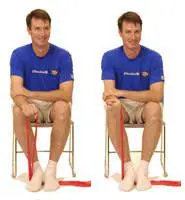
These are almost reverse wrist loops. You can use dumbbells, a band, or nothing. Sit and hold your arm at a 90-degree angle, palm down. Bend your wrists up. Return the wrist to the starting position. Repeat ten times, then switch sides. As with the previous movement, make sure the movement is only in your wrist. You may want to position your arms so that your wrists can hang from your legs or a bench. Once your wrist starts to hang at about 90 degrees, you’ll have a better range of motion for the exercise.
Ball squeeze exercise
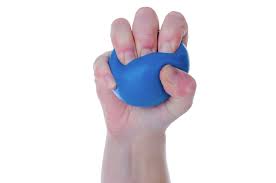
The ball squeeze exercise is a simple and effective way to help alleviate some of the symptoms associated with carpal tunnel syndrome, which is a condition that can cause pain, numbness, and tingling in the hand and arm. Performing this exercise can help strengthen the muscles in your hands and wrists. Here’s how to do the ball squeeze exercise:
Get a soft stress ball or any soft, pliable ball that fits comfortably in your hand.
Starting with the comfortable supported sitting position.
Hold the ball in one hand and squeeze it as hard as you can without causing yourself any pain. Hold the squeeze for 5 seconds.
Relax your grip and straighten your fingers.
Repeat the squeezing and releasing motion about 10-15 times.
change the hands and repeat the same procedure on the other hand.
Performing this exercise regularly can help improve blood circulation in your hands and may provide some relief from the discomfort associated with carpal tunnel syndrome. However, it’s essential to consult with a healthcare professional for a comprehensive treatment plan, as they can provide specific guidance tailored to your individual needs and condition. They may also recommend additional exercises and therapies that can help manage the symptoms of carpal tunnel syndrome.
Fist making exercise

Fist-making exercises are often recommended as part of a comprehensive physical therapy routine for individuals with carpal tunnel syndrome. These exercises can help to improve the strength and flexibility of the muscles in the hands and wrists. Here’s a simple fist-making exercise that you can perform:
Begin by extending your arms straight out in front of you at shoulder level.
Slowly make a gentle fist with both hands, wrapping your fingers around your thumbs.
Hold the fist for 5 seconds while focusing on feeling the stretch in your hands and forearms.
Slowly release the fist and straighten out your fingers.
Repeat the exercise 10 to 15 times.
Performing this exercise regularly can help alleviate some of the symptoms associated with carpal tunnel syndrome by improving the flexibility and strength of the muscles in your hands and wrists. However, it’s important to consult with a healthcare professional or physical therapist to get a comprehensive treatment plan tailored to your specific needs. They can provide you with specific exercises and guidance to help manage your symptoms effectively. Additionally, they may suggest other therapies and lifestyle modifications to complement your exercise routine.
Lumbrical strengthening
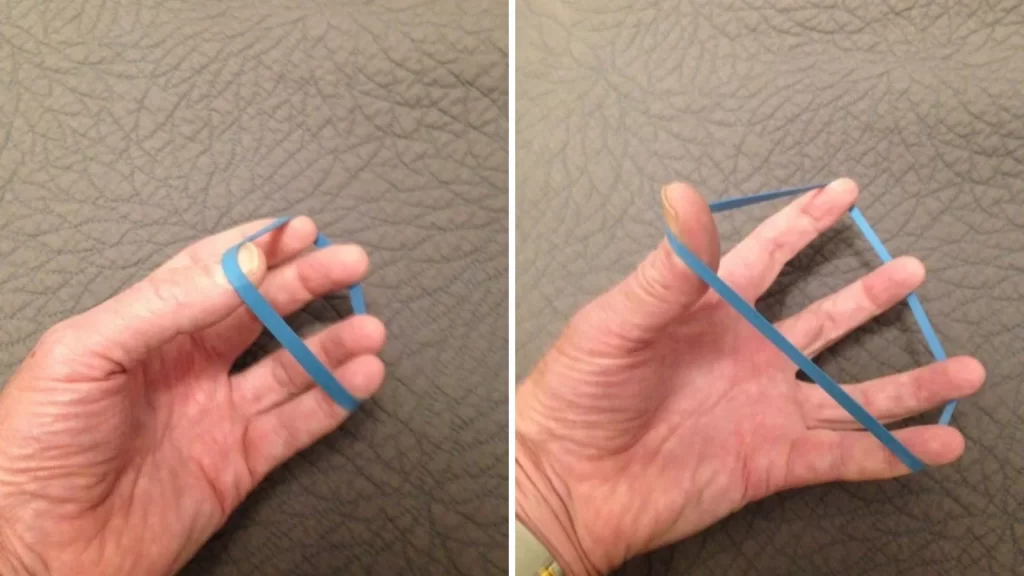
Strengthening the hand lumbrical muscles can be beneficial for individuals with carpal tunnel syndrome as it can help improve grip strength and overall hand function. Here is an exercise that targets the hand lumbrical muscles:
Begin by sitting comfortably at a table or desk.
Place your hand palm-down on the table, with your wrist in a neutral position.
Place a rubber band around your fingers close to your fingertips.
Spread your fingers apart against the resistance of the rubber band, extending your fingers as far as possible.
Hold this position for a few seconds and then relax your fingers back to the starting position.
Repeat this exercise for 10-15 repetitions for each hand.
Make sure to perform this exercise in a slow and controlled manner, focusing on engaging the hand lumbrical muscles. If you experience any pain or discomfort while performing the exercise, stop immediately and consult a healthcare professional.
Additionally, it is important to integrate a comprehensive treatment plan that may include a combination of exercises, lifestyle modifications, ergonomic adjustments, and possibly medical interventions as recommended by a healthcare provider. Working closely with a physical therapist or an occupational therapist can provide you with a personalized exercise program tailored to your specific needs and condition.
Handshake
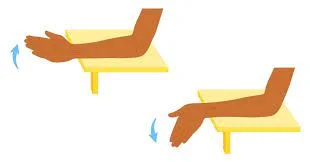
The “handshake” exercise can be beneficial for individuals with carpal tunnel syndrome, as it helps to stretch and strengthen the muscles in the hands and wrists. here is the whole procedure of the exercise.
With your palm facing down, stretch your arm in front of you to get started.
Use your other hand to gently press your fingers and hand back toward your body, as if you were offering someone a handshake.
Hold this position for 15 to 30 seconds, feeling a gentle stretch in your wrist and forearm.
Release the stretch and relax your hand and fingers.
you can do this exercise anytime or anywhere according to your preferences.
Performing the handshake exercise regularly can help improve flexibility and reduce the discomfort associated with carpal tunnel syndrome. However, it’s crucial to consult with a healthcare professional, such as a physical therapist or a physician specializing in hand health, before starting any new exercises. They can provide you with tailored advice and a comprehensive treatment plan, which may include specific exercises, lifestyle modifications, and other therapies to manage your symptoms effectively.
Thumb touches

The thumb touches exercise is a simple and effective way to help improve flexibility and mobility in the fingers, hands, and wrists, which can be beneficial for individuals with carpal tunnel syndrome. Here is the whole how procedure of this exercise:
Start with the supported sitting position or standing position.
keep your hand on the pillow or plinth and start this procedure for the exercise.
Touch the tip of your thumb to the tip of each finger, one at a time, starting with your index finger, then moving to your middle finger, ring finger, and pinky finger.
Repeat this sequence a few times, gradually increasing the speed of the touches while maintaining control and precision.
Perform the exercise for one -to two minutes.
Regularly practicing the thumb touches exercise can help to improve dexterity and reduce the discomfort associated with carpal tunnel syndrome. It’s essential to consult with a healthcare professional or physical therapist to receive a comprehensive treatment plan tailored to your specific needs. They can provide you with specific exercises and guidance to manage your symptoms effectively, along with recommending other therapies and lifestyle modifications to support your recovery.
Wrist resistance
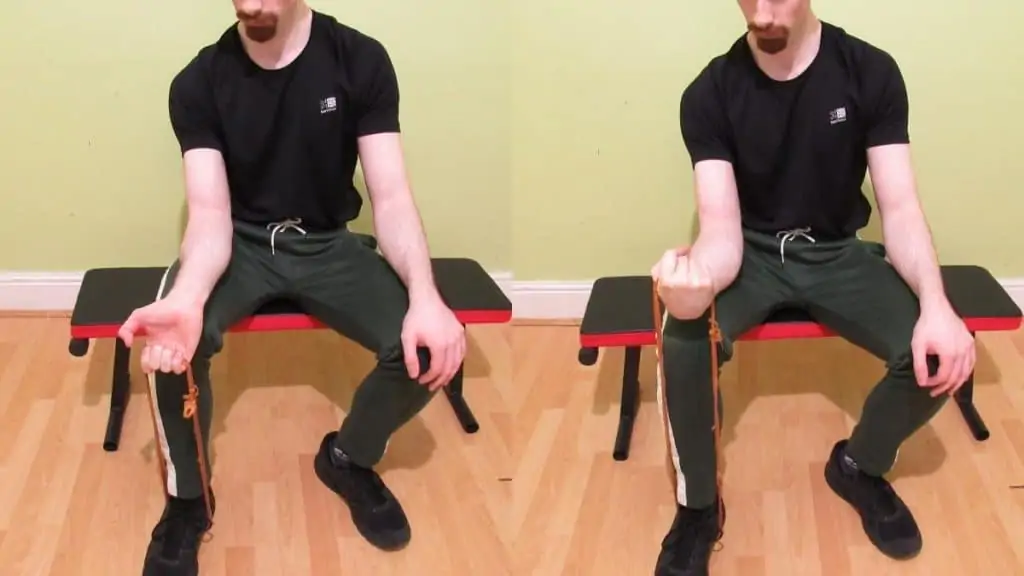
Wrist resistance exercises can help strengthen the muscles around the wrists and improve their flexibility, which can be beneficial for conditions like carpal tunnel syndrome. Here’s a simple wrist resistance exercise you can perform:
Start with the sitting position(on a chair).
Hold your arm straight out in front of you at shoulder level with your palm facing down.
Place your other hand on top of your outstretched hand, applying gentle resistance.
Try to move your hand upward against the resistance while keeping your arm and wrist straight.
Hold this position for 5-10 seconds.
Relax and return your hand to the starting position.
Repeat the exercise 5-10 times on each hand.
This exercise can be an effective way to strengthen the muscles around the wrists. However, it’s important to perform the exercise gently and without causing any pain. Consult with a healthcare professional or physical therapist to get a comprehensive treatment plan tailored to your specific needs, as they can provide you with specific exercises and guidance to manage your symptoms effectively. They may also recommend other therapies and lifestyle modifications to support your recovery.
Finger tapping

Finger-tapping exercises can help improve blood circulation and flexibility in the fingers, which may be beneficial for individuals with carpal tunnel syndrome. Here’s a simple finger-tapping exercise that you can perform:
For this exercise, you can use a sitting position or a standing position in front of the table.
Place your hands on a flat surface, such as a table, with your palms facing down.
Lift one finger at a time, starting with your index finger, then your middle finger, ring finger, and pinky finger, tapping each finger on the surface in a rhythmic motion.
Continue tapping each finger individually for 30 seconds to one minute, maintaining a steady and even pace.
After tapping each finger, you can reverse the order and tap the fingers in the opposite direction.
Ensure that the tapping motion is gentle and controlled, without causing any pain or discomfort. This exercise can help increase blood flow and reduce stiffness in the fingers, potentially easing the symptoms of carpal tunnel syndrome. However, it’s important to consult a healthcare professional for a comprehensive treatment plan if you’re experiencing persistent symptoms of carpal tunnel syndrome.
Pegboard

Pegboard exercises can be beneficial for improving dexterity and fine motor skills, which can help individuals with carpal tunnel syndrome. Here’s a pegboard exercise that you can perform:
Set up a pegboard on a stable surface at a comfortable height for you to work with.
Begin by grasping the pegs between your thumb and fingers and placing them into the pegboard holes. Focus on using controlled movements and maintaining proper hand and wrist alignment throughout the exercise.
Start with a simple pattern or layout, and gradually increase the complexity of the pattern as your skills improve.
As you become more comfortable with the exercise, try to work on speed while maintaining accuracy and precision.
Perform the exercise for a designated period, such as five to ten minutes, depending on your comfort level and any recommendations from your healthcare provider.
Make sure to listen to your body and stop the exercise if you experience any pain or discomfort. If you have any concerns about performing pegboard exercises or any other physical activities due to carpal tunnel syndrome, it’s essential to consult a healthcare professional or a physical therapist for guidance tailored to your specific condition. They can provide personalized recommendations and exercises that align with your treatment plan and overall health goals.
Tendon glide
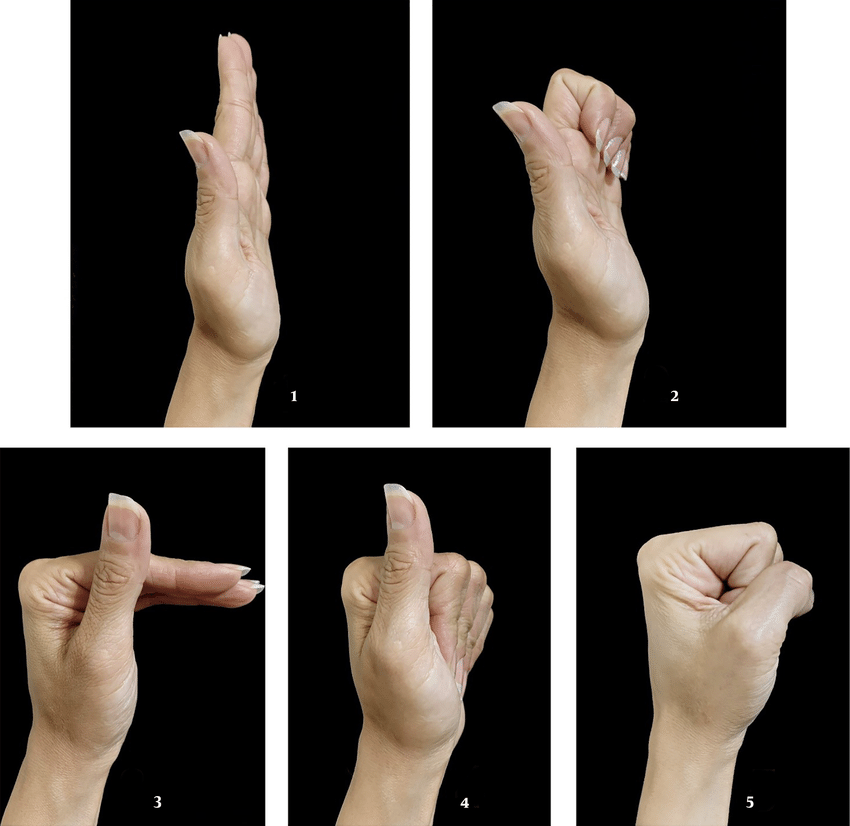
This exercise gently stretches the carpal tunnels. A reliable source shows that the use of a splint and tendon and nerve gliding exercises improved carpal tunnel syndrome more than a splint alone. People can repeat these exercises with both arms at the same time or alternate with both arms:
Do this exercise with your elbow extension which can make your forearm straight. Extend your fingers and thumb parallel to your wrist so that all fingers point straight up. Bend the tops of your fingers into a hook shape. Then bend your fingers into a tight fist with the thumb on top of the fingers. Hold the glide positions for three to five seconds.
People can also do the following, which is a similar muscle-sliding exercise:
Extend your fingers and thumb parallel to your wrist so that all fingers point straight up. Bend your fingers at the bottom knuckles, pointing them straight out at right angles. Bend the fingers of the middle knuckles so that the fingertips touch the palm. Hold the glide positions for three to five seconds. Repeat these exercises five to ten times, two to three times a day, as many days a week as you feel comfortable.
Nerve gliding exercise
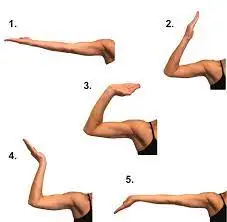
The goal of nerve gliding exercises is to restore nerve mobility and reduce symptoms. When a nerve is irritated, it cannot slide normally through the surrounding sheath, which can cause pain, tingling, and numbness. Like muscles, nerves can be gently mobilized to move normally and thus reduce symptoms.
median nerve glide
Make a fist with one hand and stick out your thumb. Open your fingers, straighten your fingers and thumb, and hold your thumb on the side of your hand. Gently bend the arm back toward the forearm and then extend the thumb to the side. Using the opposite hand, press lightly on the thumb to stretch it.
Hold for three to seven seconds with each change of position. Release and repeat the entire exercise on the other side. People can repeat this exercise 10-15 times a day, six to seven days a week. Applying a cold compress, such as an ice pack wrapped in a towel or a bag of frozen peas, for 20 minutes after exercise will keep inflammation at bay.
Ulnar nerve glide
Begin in a seated or standing position with your affected arm extended out to the side, palm facing up.
Bend your wrist inward gently, then straighten your fingers and extend your wrist, aiming to create a gliding movement along the path of the ulnar nerve.
Perform the movement smoothly and without straining the wrist or fingers.
Repeat this exercise eight to ten times per session, and do three sets a day.
Radial nerve glide
Sit or stand in a comfortable position with your affected arm extended out to the side, palm facing down.
Bend your wrist upward and extend your fingers, then gently flex your wrist and make a fist, aiming to facilitate a gliding movement along the path of the radial nerve.
Perform the movement smoothly and without causing discomfort.
Repeat this exercise eight to ten times per session, and do three sets a day.
Nerve gliding exercises should be performed gently and consistently to promote the smooth gliding of the nerves and prevent further irritation. However, it is essential to consult with a healthcare professional, such as a physical therapist or occupational therapist, to ensure that these exercises are suitable for your specific condition and to receive guidance on performing them correctly. Additionally, incorporating nerve gliding exercises into a comprehensive treatment plan that includes other interventions, such as splinting, stretching, and ergonomic modifications, can enhance the overall management of carpal tunnel syndrome.
Hand grip exercise
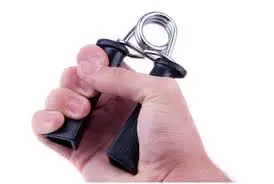
Hand Grip is described as the force you use to pull or lift things. It can also be used to measure muscle strength or the maximum force exerted by forearm muscles. There are several different squat exercises that all work different muscle groups. Here is an overview of the main types of these exercises:
Crush Grip: Crush is the act of putting your hand around something and squeezing. You do this every time you hold a stop. Pinch Grip: Pinch is the act of holding and squeezing an object with just your fingertips without letting it fall. It can also pinch something with its fingertips.
Crush Grip Support: This supports an object with a crush grip where you support most of the load with your fingers. Common examples are carrying dumbbells, deadlifts or even carrying grocery bags by hand.
Open Crush Grip: This happens when you use a crush but your fingers don’t touch or overlap. Fat sticks or clumsy objects are good for practicing the open-crushing grip. In real life, it would be easier to open cans here (among other things) if your fingers are loose. A strong open-crushing handle is really useful.
Wrist extension: This is not technically a grip exercise in any sense of the word, but it works synergistic muscles with the muscles you use to grip. It maintains a healthy muscle balance in your hands and wrists, helping to prevent injury and overuse of these muscle groups. They also help improve your actual grip strength.
Straps or Sand Arms: Strap extensions can be done by placing the strap around all five fingers(or even a couple at a time) and extending your arm out for reps or time. You can buy professional ribbons for this, but I recommend just using the t
hick ribbon that you get for broccoli crowns, a thick rubber band, or even one of those rubber bands that people use.
Benefits of Hand Grip Exercises
Increase strength
Increase endurance and resistance to pains
Improve dexterity
Relieve stress and boost confidence
Precaution while exercise
When performing exercises for carpal tunnel syndrome, it’s crucial to be mindful of your body’s signals and limitations. Here are the list of precaution that you should keep in mind:
Gentle Approach: Exercises should be performed gently without causing pain or discomfort. Pushing through pain can exacerbate symptoms and potentially worsen the condition.
Consistency: Consistent and regular practice of exercises is key to experiencing their full benefits. However, avoid overexertion, as it can strain the muscles and nerves.
Proper Technique: Ensure you’re using the correct technique while performing exercises to maximize their effectiveness and minimize the risk of injury.
Consultation: Before starting any exercise regimen, consult a healthcare professional, such as a physical therapist or occupational therapist. They can provide guidance on which exercises are suitable for your specific condition and how to perform them safely.
Balanced Routine: Combine different types of exercises to promote flexibility, strength, and nerve mobility. Incorporate stretching, strengthening, and nerve gliding exercises to create a comprehensive routine.
Rest: Allow your hands and wrists to rest between exercise sessions to prevent overuse and strain.
Ergonomics: Implement ergonomic practices in your daily activities to reduce strain on your hands and wrists. Maintain proper posture, use ergonomic tools, and take regular breaks during activities that involve repetitive hand movements.
Follow-Up: Regularly follow up with your healthcare provider to monitor your progress and make any necessary adjustments to your exercise routine or treatment plan.
By incorporating these considerations into your exercise regimen, you can effectively manage the symptoms of carpal tunnel syndrome and promote the overall health and well-being of your hands and wrists. Always prioritize your comfort and safety while striving to improve your condition.
Carpal Tunnel Syndrome Risk Factors
You may be at greater risk of developing carpal tunnel syndrome if you:
If you are a woman. It is three times higher chances in women than in men. This may be because they tend to have smaller carpal tunnels. A family member has small carpal tunnels.
Do a job where you make the same movements over and over again with your arm, hand, or wrist, such as an assembly line worker, seamstress, baker, cashier, hairdresser, or musician.
A wrist fracture or dislocation
Certain chronic diseases, such as diabetes, increase the risk of nerve damage, including damage to the median nerve.
Rheumatoid arthritis and other conditions with an inflammatory component can affect the lining around the wrist tendons and put pressure on the median nerve.
obesity is the one of the common risk factor(fat compress the median nerve of hand)
Fluid accumulation can increase pressure in the carpal tunnel, which irritates the central nerve. This is common during pregnancy and menopause. after pregnancy, carpal tunnel syndrome is mostly seen in females which is also a risk factor.
Certain diseases, such as menopause, hypothyroidism, kidney failure, and lymphedema, can increase the likelihood of carpal tunnel syndrome.
Carpal Tunnel Syndrome Complications
If you have carpal tunnel syndrome and you don’t treat it, the symptoms can last a long time and get worse. If the diagnosis is made in time, the condition is easier to treat. You can avoid permanent muscle damage and keep your arms as they should be.
To Avoid carpal tunnel syndrome, try included things:
Keep your wrists straight.
Use a splint or orthosis to keep your wrist in an anatomical position.
Avoid bending and extending your wrists over and over.
Keep your hands warm. Take breaks whenever possible.
Keep your hands and wrists in the correct position while working.
Treatment For carpal tunnel syndrome
Sometimes most people with carpal tunnel syndrome will worsen over time without some form of treatment. For this reason, it is important to be assessed and diagnosed by your doctor early on. during starting phase of this condition, you can stop the progression of this condition by exercising and following some prevention during this condition.
Non-surgical treatment
If the symptoms of carpal tunnel syndrome are diagnosed and treated early, they can often be relieved without surgery. If your diagnosis is uncertain or if your symptoms are mild, your doctor will recommend non-surgical treatment first. Wrist rest
Using a splint or brace reduces pressure on the median nerve, keeping the wrist straight. Non-surgical treatments may include:
Support or splint: Using a brace or splint at night will prevent you from bending your wrist while you sleep. Keeping the wrist in a straight or neutral position reduces pressure on the carpal tunnel nerve. It can also help to dress your baby during the day while you do activities that make your symptoms worse.
Nonsteroidal anti-inflammatory drugs (NSAIDs): Anti-inflammatory medications such as ibuprofen and naproxen can provide relief from pain and inflammation.
The activity changes: Symptoms often occur when the hand and wrist are in the same position for too long – especially when the wrist is bent or extended. If your work or recreational activities make your symptoms worse, changing or modifying those activities can help slow or stop the progression of the disease. In some cases, this may require you to make changes to your workplace or workstation.
Neurogliding exercises: Some patients may benefit from exercises that help the median nerve move more freely within the carpal tunnel. A doctor or therapist may recommend certain exercises.
Steroid injections: A steroid injection into the carpal tunnel can temporarily relieve symptoms(pain and tingling). Corticosteroid or cortisone drug is the most powerful anti-inflammatory agent that can be inserted into the carpal tunnel of the hand. These injections often relieve painful symptoms or help relieve symptoms. In patients with mild early-stage disease, the injections can provide long-term symptomatic relief. For those with moderate to severe disease, the positive effects of the injection may be temporary. Your doctor may also use a cortisone injection to diagnose your carpal tunnel syndrome.
Surgical treatment
If non-surgical treatments do not relieve your symptoms or provide only temporary relief, your doctor may recommend surgery.
The recommendation for surgery is based on these aspects:
Severity of symptoms
Physical exam results
Response to nonoperative treatment
Test results
In long-term cases where the muscles of the thumb are permanently numb and exhausted, surgery may be recommended to prevent irreversible damage. The recommendations of surgery if you do not get relief from non-surgical treatment(exercise and prevention) or if you have significant nerve changes during testing.
Surgical Procedure
The surgical procedure for carpal tunnel syndrome is to reduce the pressure from the median nerve which develops the symptoms of carpal tunnel syndrome.
Most surgeons perform this procedure using one of two different surgical techniques, but both aim to relieve pressure on your median nerve by cutting through the ligament that forms the roof of the tunnel (transverse carpal ligament). The release of this ligament increases the size of the tunnel and reduces pressure on the median nerve, allowing the nerve to have proper blood flow and nerve function.
The operation can be performed under general anesthesia, which puts you to sleep, or with local anesthesia, which numbs only the hand and arm. In some cases, when local anesthesia is used, you will also be given a mild sedative through an intravenous (IV) tube inserted into a vein in your arm.
Open the carpal tunnel release. In open carpal tunnel surgery, the doctor makes a small incision in the palm of the hand and looks at the inside of your hand and wrist through the incision. During the procedure, the doctor divides the transverse carpal ligament (the roof of the carpal tunnel). It makes the tunnel size bigger to reduce the pressure from the median nerve. After surgery, the ligament can gradually grow back in an expanded manner, but there is more space in the carpal tunnel and less pressure on the central nerve.
Endoscopic carpal tunnel dissection. In endoscopic surgery, the doctor makes one or two small incisions in the skin (called portals) and uses a miniature camera or endoscope to see the inside of your hand and wrist. A special knife similar to an open carpal tunnel is used to divide the transverse carpal ligament.
The results of open surgery and endoscopic surgery are similar. Both techniques have advantages and potential risks. Your doctor will discuss with you which surgical technique is best for you.
Recovery
Immediately after surgery, you will be encouraged to raise your hand over your heart and move your fingers to reduce swelling and prevent stiffness. You should expect pain, swelling, and stiffness after the procedure. Mild tenderness in the palm may last several weeks to several months.
Nighttime symptoms improve dramatically in most patients within the first week or so after surgery.
Grip and compressive strength
Grip and compression strength usually return approximately 2-3 months after surgery. If your median nerve was in poor condition before surgery, your grip and compression strength may not improve for about 6 to 12 months. In very severe cases, you may not fully regain the normal strength you had before you developed carpal tunnel syndrome. In these cases, however, surgery is important to prevent deterioration of the condition and function of your nerve.
Post-surgical care after surgery
Post-surgical care for carpal tunnel syndrome is crucial to ensure proper healing and recovery. Here are some general post-surgical care guidelines typically recommended:
Dressing Care: Keep the surgical site clean and dry. Follow any specific instructions provided by your surgeon for changing dressings or bandages.
Elevation: Elevate your hand and wrist above heart level to help reduce swelling.
Pain Management: Take pain relieving medicine as prescribed by your doctor to ease any pain. Follow the prescribed dosage and frequency.
Physical Therapy: Follow any physical therapy exercises recommended by your healthcare provider to help restore strength and flexibility in your hand and wrist.
Follow-Up Appointments: Attend all scheduled follow-up appointments with your surgeon to monitor your progress and ensure proper healing.
Activity Restrictions: Avoid heavy lifting and strenuous activities with the operated hand or wrist during the initial recovery period.
Wound Care: Keep an eye on the surgical site for any signs of infection, such as increased redness, swelling, or drainage. discussed with your doctor if you feel any inconvenience.
Rehabilitation and Recovery: Gradually reintroduce hand and wrist movements as advised by your healthcare provider to avoid complications and promote proper healing.
Ergonomic Changes: Make ergonomic adjustments at your workplace or home to prevent any repetitive movements that might contribute to the recurrence of carpal tunnel syndrome.
It is essential to follow the specific post-surgical care instructions provided by your healthcare provider as every individual’s situation may be different. Adhering to these guidelines can promote proper healing and increase the likelihood of a successful recovery after carpal tunnel release surgery.
Numbness and tingling
Numbness and tingling tend to improve in the first few months after surgery. In some patients with mild disease, sensation may return immediately. Patients with severe disease may not have normal feeling in their fingertips 6 to 12 months after surgery. In very severe cases, some patients may never recover. Again, surgery is still important in these cases to prevent this condition from getting worse the condition. You may need to wear a splint or wrist braces for several weeks after surgery. You can use your hand for light activities without significant discomfort. Driving, self-care activities, and light lifting and gripping may be allowed immediately after surgery. The doctor will discuss with you when you can return to work and whether there will be any restrictions on your work.
Complications
Although complications are possible with any surgery, your doctor and surgical team take steps to minimize the risks. The most common complications of carpal tunnel removal surgery are:
Bleeding
An infection
Problems with wound healing
Aggravation or injury to the nervous system
Ten home remedies for carpal tunnel syndrome
The following home remedies can help relieve carpal tunnel syndrome:
Take rest the affected hand and wrist at least for at least two weeks
using anti-vibration products with vibrating tools
using a wrist brace or braces to support the central nerve
does gentle hand, finger, and wrist stretching exercises
massaging wrists, palms, and backs of hands
wear elastic gloves to protect hands and wrists
applying heat to the wrist to reduce pain
using ice can also help reduce swelling
adding material to the handles of tools and cutlery for a more comfortable grip
take painkillers for pain relief.
People who try over-the-counter medications should be aware that studies have shown that they do not provide complete relief for people with CTS symptoms. They can also increase the risk of bowel problems and bleeding.
Prevention for Carpal Tunnel Syndrome
How can carpal burrow disorder be prevented?
Carpal tunnel syndrome can be troublesome to anticipate. The condition can be caused by so numerous distinctive exercises in a person’s existence that avoidance can be challenging. Workstation changes—proper seating, hand, and wrist placement—can offer assistance to diminish a few components that can lead to carpal burrow disorder. Other preventative strategies include:
Reduce your constraints and unwind your hold. In the event that your work includes a cash enroll or console, for occurrence, hit the keys delicately. For drawn-out penmanship, utilize a huge write with a larger-than-average, delicate hold connector, and free-flowing ink.
Take brief, visit breaks. Tenderly extend and twist hands and wrists intermittently. Substitute tasks when conceivable. Typically particularly critical in case you utilize hardware that vibrates or that requires you to apply an awesome sum of constrain. Indeed many minutes each hour can make a difference.
Watch your shape. Maintain a strategic distance from bowing your wrist all the way up or down. A loose center position is best. Keep your keyboard at elbow tallness or somewhat lower.
Improve your pose. The off-base pose rolls shoulders forward, shortening the neck and bear muscles and compressing nerves within the neck. This will influence the wrists, fingers, and hands, and can cause neck pain.
Change your computer mouse. Make beyond any doubt that your computer mouse is comfortable and doesn’t strain your wrist.
Keep your hands warm. You’re more likely to create hand torment and solidness on the off chance that you work in a cold environment. In the event that you can’t control the temperature at work, put on fingerless gloves that keep the hands and wrists warm.
Orthosis for carpal tunnel syndrome
Orthoses, or wrist splints, are commonly used in the conservative management of carpal tunnel syndrome (CTS). These orthotic devices are designed to stabilize the wrist in a neutral position, reducing pressure on the median nerve and alleviating symptoms. They are typically worn during activities that can exacerbate symptoms, such as repetitive hand movements or during sleep, to prevent the wrist from bending excessively.
There are various types of orthoses available for individuals with carpal tunnel syndrome, each serving a specific purpose in managing the condition. Some common types of orthoses used for carpal tunnel syndrome include:
Resting Splints: These are primarily used during sleep to prevent wrist flexion or extension, keeping the wrist in a neutral position. By maintaining the wrist in a straight, neutral alignment, these splints help reduce pressure on the median nerve, alleviating symptoms like numbness and pain.
Functional Splints: These splints allow limited movement while restricting extreme wrist flexion and extension. They are often recommended for individuals who need to perform specific tasks that involve moderate hand movements but should avoid excessive stress on the wrist.
Custom-Made Splints: In some cases, a healthcare professional may recommend custom-made orthoses tailored to the specific needs of the individual. These can provide optimal support and comfort, especially for individuals with unique wrist anatomies or severe CTS symptoms.
Wearing orthoses as part of the overall management of carpal tunnel syndrome can provide temporary relief and prevent the condition from worsening. However, it’s crucial to consult with a healthcare professional, such as a physician or a physical therapist, to determine the most suitable type of orthosis and the appropriate duration for wearing it. Additionally, combining orthotic use with other treatments such as exercises, ergonomic adjustments, and lifestyle modifications can contribute to a comprehensive approach to managing carpal tunnel syndrome effectively.
Ergonomic advice for carpal tunnel syndrome
Ergonomic adjustments can play a crucial role in managing and preventing symptoms of carpal tunnel syndrome. Here are some key ergonomic tips that can help alleviate strain on the hands and wrists:
Maintain Proper Wrist Position: Keep your wrists in a neutral, straight position while working. Avoid excessive flexion or extension of the wrists to minimize pressure on the median nerve.
Supportive Workspace Setup: Adjust your desk, chair, and computer to ensure that your forearms are parallel to the floor and your wrists are in a neutral position while typing or using the mouse. you can use a modified keyboard which promotes the wrist’s neutral position.
Frequent Breaks: Incorporate regular breaks into your work schedule to rest your hands and wrists. Use these breaks to perform gentle stretching exercises and rotate your wrists to improve flexibility and blood circulation.
Use Supportive Devices: Consider using wrist pads or ergonomic mouse pads to provide cushioning and support for your wrists during prolonged computer use. Utilize tools and equipment that reduce the need for excessive gripping or forceful hand movements.
Maintain Good Posture: Sit in an ergonomic chair that supports your back and encourages proper posture. Keep your shoulders relaxed and avoid slouching, as poor posture can contribute to wrist and hand discomfort.
Lighten the Grip: Use a light and relaxed grip when performing tasks that involve grasping objects or using tools. Avoid excessive force and pressure, as this can strain the muscles and exacerbate symptoms of carpal tunnel syndrome.
Alternate Tasks: Vary your tasks and activities throughout the day to prevent overuse of specific muscle groups. Rotate between different tasks that involve varying hand and wrist movements to distribute the workload evenly.
By implementing these ergonomic practices, you can create a more comfortable and supportive workspace that promotes healthy hand and wrist movements, reducing the risk of aggravating carpal tunnel syndrome. you should take care of the symptoms and avoid the activity which aggravates the condition if symptoms become severe consult with the doctors.
The Benefit of exercise with carpal tunnel syndrome
Exercise can offer several benefits for individuals with carpal tunnel syndrome (CTS), a condition characterized by pressure on the median nerve in the wrist. Engaging in specific exercises can help manage the symptoms and improve overall wrist function. Some of the benefits of exercise for carpal tunnel syndrome include:
Improved Flexibility: Regular stretching and mobility exercises can enhance the flexibility of the wrist and surrounding tissues, reducing stiffness and promoting a wider range of motion.
Enhanced Strength: Strengthening exercises can help build muscle support around the wrist, reducing pressure on the median nerve and providing better stability for the wrist joint.
Reduced Pain and Discomfort: Engaging in appropriate exercises can alleviate pain and discomfort associated with carpal tunnel syndrome by promoting blood circulation, reducing muscle tension, and improving overall wrist function.
Prevention of Stiffness: Exercises help prevent the stiffness that often occurs in the wrist due to repetitive motions, keeping the joint supple and maintaining its ability to move freely.
Improved Nerve Mobility: Nerve gliding exercises can facilitate the smooth movement of the median nerve, reducing adhesions or scar tissue around it and alleviating symptoms such as pain, numbness, and tingling.
Enhanced Blood Circulation: Exercise can promote better blood flow to the affected area, aiding in the healing process and reducing inflammation, which can contribute to improved symptom management.
Promotion of Overall Well-Being: Engaging in regular physical activity, including exercises for carpal tunnel syndrome, can contribute to an overall sense of well-being, improving mood, and reducing stress, which can indirectly help manage the symptoms associated with the condition.
When incorporating exercise into a comprehensive treatment plan for carpal tunnel syndrome, it’s essential to consult with a healthcare professional, such as a physical therapist or occupational therapist, to ensure that the exercises are suitable and safe for your specific condition. A well-rounded approach that includes exercises, ergonomic modifications, and other appropriate interventions can lead to effective symptom management and better overall wrist health.
A Note from Mobility Physiotherapy Clinic
Carpal tunnel syndrome can significantly impact your daily life, causing discomfort and limitations in hand and wrist function. While it can be challenging, there are various strategies and treatments available to manage and alleviate its symptoms.
Consider consulting a healthcare professional for a comprehensive evaluation and personalized guidance tailored to your specific needs. Implementing a combination of exercises, ergonomic adjustments, and, if necessary, orthotic devices can contribute to improved wrist mobility and reduced discomfort. Prioritize self-care, listen to your body, and remain consistent with your treatment plan to promote a healthy recovery and better quality of life.
FAQ
Despite their limitations, carpal tunnel exercises can help: Complement other therapies. Carpal tunnel exercises can help with mild to moderate symptoms when combined with other treatments such as activity modification, wrist weight bearing, or corticosteroid injections. To prevent nerve scarring after surgery.
How to recover from carpal tunnel syndrome without surgery
Use wrist supports at night.
Do hand and wrist stretching exercises throughout the day.
Increase physical activity and exercise.
Consider losing weight if you are at an unhealthy weight.
Change manual actions.
Learn healthy computer habits.
Stop using tobacco.
Carpal Tunnel Release | Samrapan Physiotherapy Clinic
Recovery from carpal tunnel surgery takes time – from several weeks to several months. If the nerve has been pinched for a long time, recovery may take longer. Recovery includes a wrist splint and physical therapy to strengthen and heal the wrist and hand.
How to do a carpal tunnel test at home | samrapan physiotherapy clinic
Do this test by placing the affected hand on a flat surface with the palm facing up. With the opposite hand, tap the middle area of ?? the affected wrist, right at the crease of the wrist or just below it. If you feel numbness or tingling as a result of tapping, you may have Carpal tunnel syndrome.
Carpal tunnel syndrome can be caused by inflammation and enlargement of the median nerve, inflammation, and enlargement of tendons, thickening of the transverse carpal ligament, or a mass lesion (such as a tumor or cyst) in the carpal tunnel, or a combination.
Carpal tunnel massage therapy is the most non-invasive, cost-effective, and effective long-term treatment for carpal tunnel syndrome. Massage treats inflammation, pain, and numbness by softening and lengthening the muscles and fascia of the neck, shoulder, upper arm, elbow, forearm, wrist, and hand.
Four Best Foods to Reduce Carpal Tunnel Symptoms
Four Best Foods to Reduce Carpal Tunnel Symptoms
Red bell peppers. The pain and tingling you feel with carpal tunnel syndrome are caused by inflammation in the wrists and arms that pinches certain nerves. …
Spinach …
Salmon …
Walnuts …
Symptoms of carpal tunnel syndrome –
Usually the thumb, index, middle, and ring fingers especially suffer from carpal tunnel syndrome. But the pain can actually extend to the elbow – and maybe even to the shoulders and neck.
References
- Carpal Tunnel Syndrome – Symptoms and Treatment – OrthoInfo – AAOS. (n.d.). https://orthoinfo.aaos.org/en/diseases–conditions/carpal-tunnel-syndrome/
- Carpal tunnel syndrome: 10 natural therapies and 10 home remedies. (n.d.). Carpal Tunnel Syndrome: 10 Natural Therapies and 10 Home Remedies. https://www.medicalnewstoday.com/articles/314772
- Sissons, B. (2023, May 25). 7 hand exercises for carpal tunnel syndrome with pictures. https://www.medicalnewstoday.com/articles/hand-exercises-for-carpal-tunnel#exercises
- Professional, C. C. M. (n.d.). Carpal Tunnel Syndrome. Cleveland Clinic. https://my.clevelandclinic.org/health/diseases/4005-carpal-tunnel-syndrome
- Carpal Tunnel Syndrome. (2003, December 3). WebMD. https://www.webmd.com/pain-management/carpal-tunnel/carpal-tunnel-syndrome
- Carpal tunnel syndrome – Symptoms and causes – Mayo Clinic. (2022, February 25). Mayo Clinic. https://www.mayoclinic.org/diseases-conditions/carpal-tunnel-syndrome/symptoms-causes/syc-20355603
- Carpal Tunnel Syndrome: What is it? Symptoms, Causes, & Treatment | The Hand Society. (n.d.). https://www.assh.org/handcare/condition/carpal-tunnel-syndrome

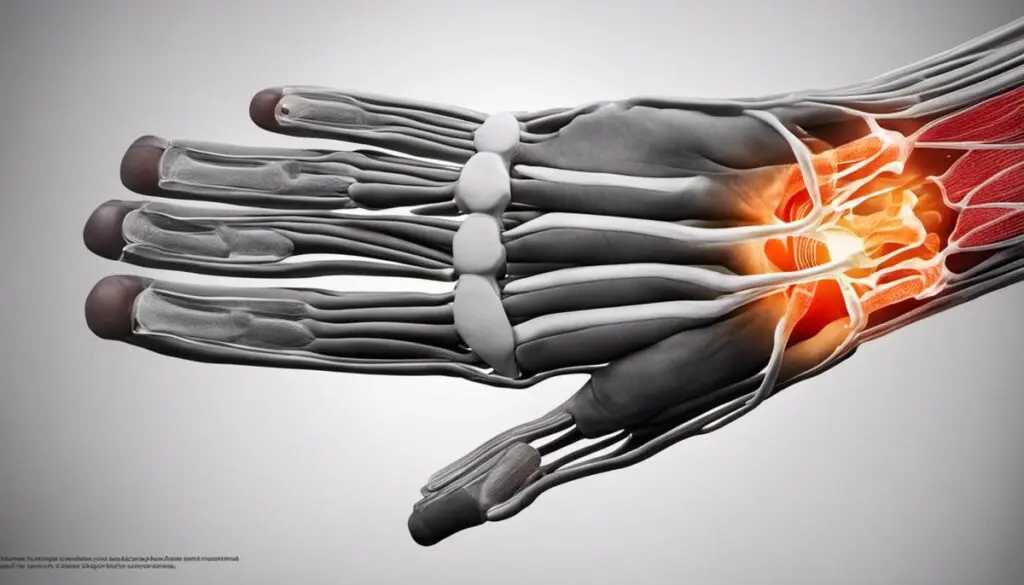
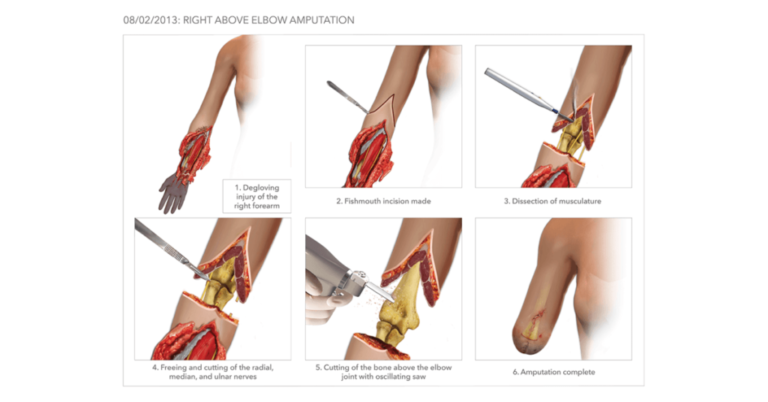
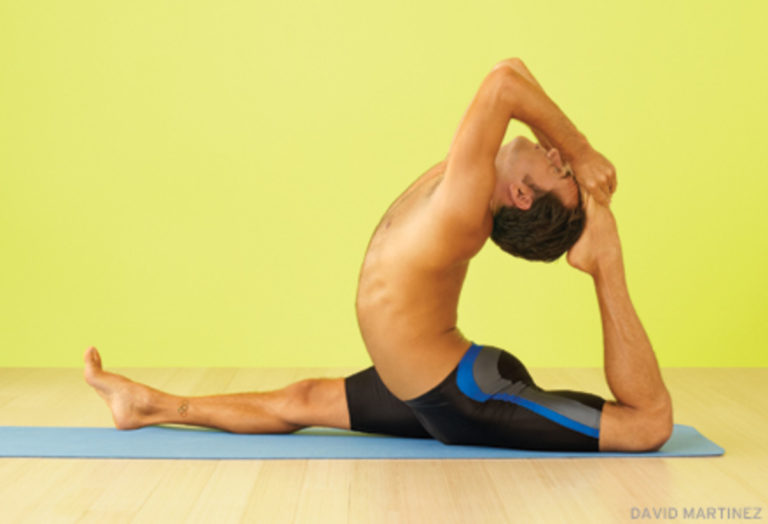
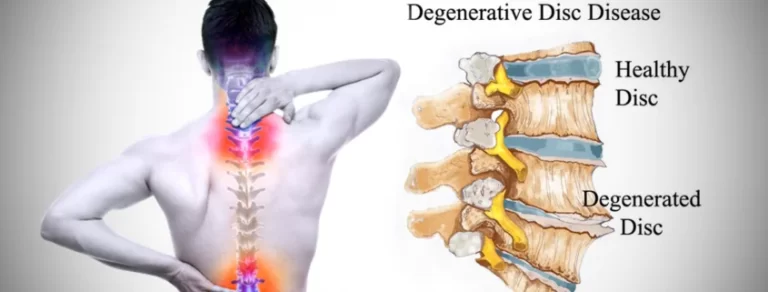

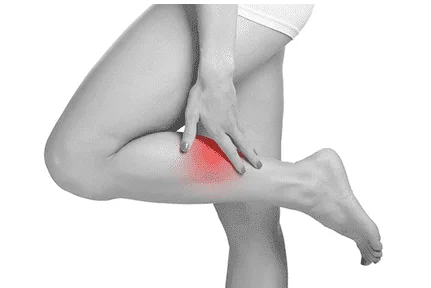

3 Comments